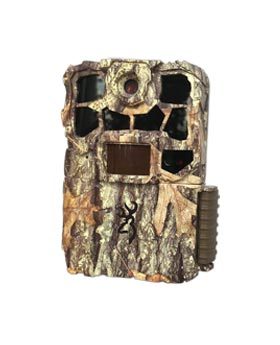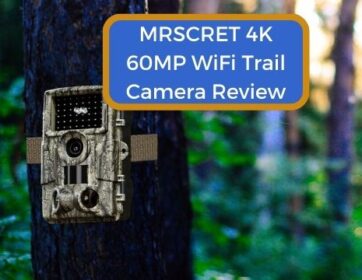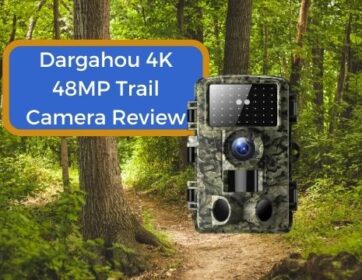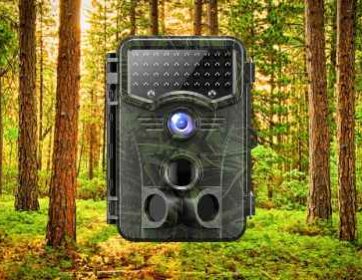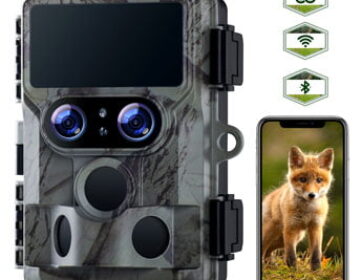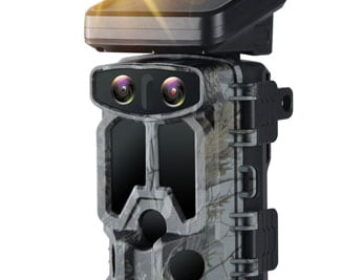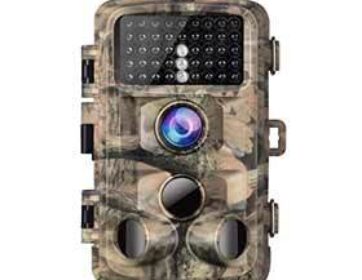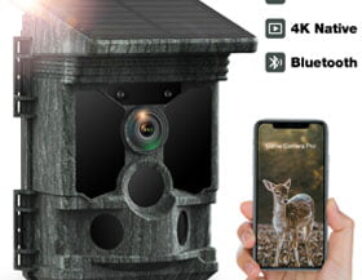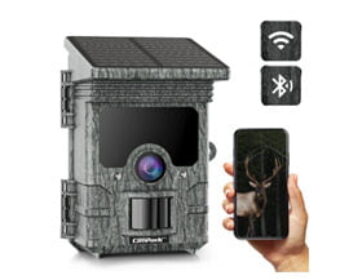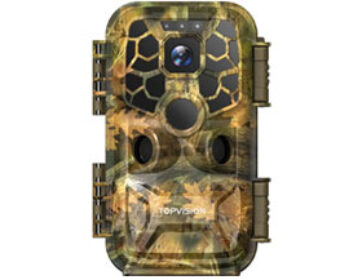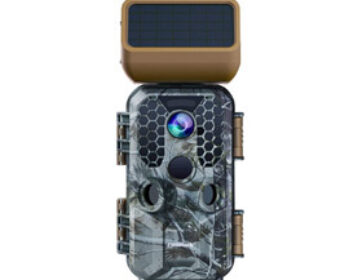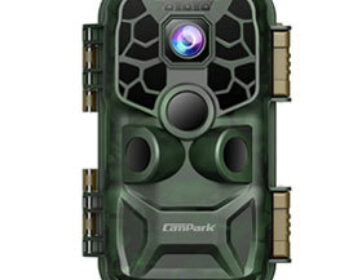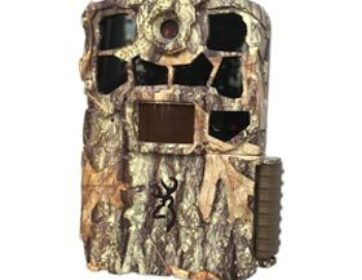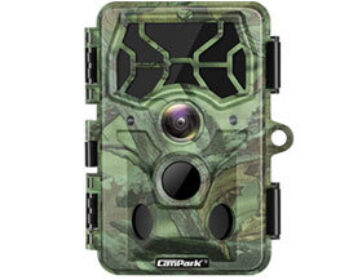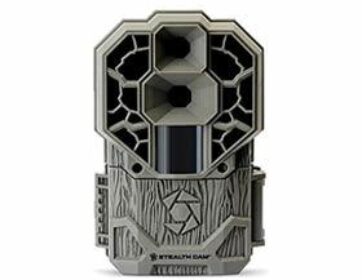The year 2017 was a big one in the world of trail cameras since that is when Stealth Cam released the first 4K trail camera. With 4K technology making its way to TVs, computer monitors, smartphones, and video game consoles it was exciting to see a trail camera that could take advantage of these advances. Since that time 4K trail cameras have continued to gain in popularity as more 4K models have continued to be released.
A lot of people use trail cameras for different reasons but regardless of what you are using them for everyone appreciates clear pictures and videos and one thing you’ll notice about 4K videos is that they’re extremely clear, which makes it possible to see every leaf and bush on screen. So whether you are using trail cameras to monitor game animals, for property surveillance, or nature photography this extra detail will come in handy.
So let’s talk about these 4K trail cameras and find out if they are worth the hype they are receiving.
Here is a table comparing some of the more popular 4K trail cameras that we have reviewed.




Table of Contents
What is a 4K Trail Camera?
Before we go too far we should probably define exactly what a 4K trail camera is in case anyone isn’t sure. Simply put, a 4K trail camera will shoot video in 4K, which is a higher resolution than the current standard of 1080p. That’s it.
It doesn’t matter what other features the camera does or doesn’t have. If it can capture 4K video it is a 4K trail camera.
To truly appreciate 4K video, and to decide if you want that ability in your next trail camera, you need to compare the technical specifications of 4K video to 1080p and other video resolutions.
What is 4K Video and Why is it Better?
Before we answer this question we need to talk about pixels. Pixels are the smallest single component, or part, of a digital image.
Videos are made up of a series of frames or images. These are displayed in rapid succession to give the illusion of movement. The number of frames, or images, and displayed per second is called the frame rate. Each frame is made of up a bunch of pixels. So basically pixels are the small dots that make up videos.
The larger the number of pixels across all frames in a video, the higher that video’s resolution is. Below we explain the number of pixels contained within different video resolutions.
SD Video (480i)
SD video, which is also referred to as 480i video, has a horizontal pixel count of 640 pixels and a vertical pixel count of 480 pixels. This gives them a total of 307,200 pixels. As a point of reference, this is the resolution standard on TVs that were made prior to the start of this millennium.
Modern cameras might give you an option to capture video in SD on some models, but you won’t 480i this listed at the top resolution the camera is capable of recording at.
720p (HD Video)
HD video, which is also referred to as 720p video, has a horizontal pixel count of 1,280 pixels and a vertical pixel count of 720 pixels, which gives it a total pixel count of 921,600 pixels. This means that 720p video has exactly 3 times the number of pixels of SD video and while this is a huge improvement over SD, videos can still look a little pixelated sometimes especially when viewed on larger displays. The ability to display 720p video was what we commonly saw when high definition televisions first hit the market.
Not that long ago it was common for trail cameras to list 720p as the highest level they could record at and while head and shoulders better than SD video you won’t see very many cameras with 720p listed as their highest video resolution these days.
1080p Video (Full HD)
With 1,920 horizontal pixels and 1,080 vertical pixels a 1080p video, also known as Full HD, has a total pixel count of 2,073,600 pixels, which is more than twice the number of pixels in a 720p video.
You can find 1080p video in all sorts of places including YouTube, computer monitors, televisions, BluRay movies, digital cameras, smartphones, and the majority of current trail camera models. However, the past few years have seen even higher resolutions creep into our devices, including trail cameras.
4K Video (Ultra HD/UHD)
4K video, also known as Ultra HD, or 4K UHD has a horizontal pixel count of 3,840 pixels and a vertical pixel count of 2,160 pixels. This gives it a total of 8,294,400 pixels, which is four times the number of pixels found in Full HD video.
It is also worth noting that there is also something called Cinema UHD or Cinema 4K, which you might hear about. This resolution simply adds 256 pixels to the horizontal axis of the 4K UHD video we just referenced. That said, the 4K UHD resolution we mentioned above is what you should expect to see on 4K trail cameras.
With the ability to capture such an incredible amount of detail 4K trail camera videos can look stunning especially when viewed on a large 4K television.
Reasons Why You Should Get a 4K Trail Camera
In order for a trail camera to record in 4K, it needs to have some higher-end components to be able to record video at that resolution. Having a digital image sensor and processor that can handle 4K video costs more money. Plus, the file sizes of 4K videos are larger and require that the cameras can accommodate larger memory cards, which also cost more money.
So do 4K trail cameras justify the extra investment. Let’s take a look at some of the reasons why you should consider buying a 4K trail camera.
You Want to Use a 4K Trail Camera as a Security Camera
A lot of people like to use trail cameras to monitor their homes or other property. As with any security camera video the more detail you have the better. Since 4K is significantly more detailed than 1080p and 720p getting a 4K trail camera is a really attractive option.
This extra detail in the videos from a 4K trail camera could prove to be invaluable should you ever need to identify a person or vehicle that was on your property.
It will give you the ability to identify individual deer or other game animals
Some hunters use trail cameras to get a general idea of what animals are in the area before and during hunting season.
Other hunters, especially some property owners, use trail cameras to identify specific animals that are on their property. Then once they know what is on their property they come up with a plan for what they want to do when hunting season arrives. However, the differences between animals can often be pretty minimal, which makes the task exceedingly difficult if your video footage doesn’t have enough detail. So if you fall into this group of hunters you will certainly appreciate the extra clarity that comes with higher resolution video as you try to identify individual animals.
You Already Have a 4K Television or Computer Monitor
If you have a 4K television or computer monitor, you already are someone who appreciates seeing the clearest pictures and videos. So if you are in the market for a trail camera it probably makes sense for you to spend a little extra to get a 4K trail camera so you can take advantage of the equipment that you already have.
Plus, regardless of what you use your trail camera(s) for it is always more satisfying when you see that the video footage it captured is crisp and clear.
Many Models to Choose From at Different Price Points
Since 2017 several more trail camera manufacturers have entered the 4K camera space, with the majority of them selling their 4K cameras at prices that are not that far removed from what most people pay for traditional trail cameras.
With many models to choose from, each with its own unique set of features, there is a range of prices to match your particular needs. In the end, competition has helped to keep prices competitive, which is a big win for consumers.
What to Look For When Shopping For a 4K Trail Camera
There are a ton of different features that you can find on trail cameras these days. So which ones are most important when shopping for a 4K trail camera?
Here are the 4 most important things to pay attention to when shopping for a 4K trail camera to meet your specific needs.
Frame Rate
One of the biggest things you want to be aware of with any 4K trail camera is the frame rate is capturing video at.
Most 1080p trail cameras capture video at 30 frames per second (fps), which is also what is used to film most live television shows including sports with the exception of slow motion video, which is captured at 60fps or greater.
So 30fps is what you want to look for with a 4K trail camera as well. However, some 4K trail cameras may not have the ability to record 4K videos at 30fps and might only record video in 4K at frame rates as low as 10 frames per second.
Trail cameras that record 4K videos are lower frame rates are often lower priced. That said, watching 4K videos with lower frame rates may not be as enjoyable to watch if it contains faster moving objects since they will often appear to be blurry or shudder. However, when you pause these lower frame rate 4K videos you might be amazed at the amount of detail and clarity you will find in the individual frames.
If you want to learn more about frame rates you might want to check out our article where we discuss what frame rate trail cameras should have.
Type of Flash
The majority of cameras these days have low glow LED flash, which works just fine. While these 850nm infrared LEDs don’t visibly illuminate the area the way traditional flash photography would. However, when the low glow flash is in use the LEDs glow red on the front of the camera giving away its location. This isn’t a big deal in most situations, but want to keep the camera’s location hidden at night you might want to opt for a model with no glow flash.
Cameras with no glow flash use 940nm infrared LEDs that are are invisible to humans and animals. Since it won’t give away a camera’s location cameras equipped with no glow flash are ideal for use as security cameras or use on public hunting land where it might be at higher risk of being stolen.
So look for a model with no glow flash if you are planning on using the camera in a way or location where keeping its location hidden is imperative. Otherwise, feel comfortable getting a camera with low glow flash as it will give you the performance you need while saving you a few dollars in the process.
Memory Card Capacity
Most trail cameras today will be able to accommodate memory cards up to 32GB in capacity. However, given the fact that the amount of storage space required for 4K video will be larger than what you would need for 1080p video, it is a good idea to make sure that the camera can accommodate memory cards larger than 32GB.
It is common to see 4K trail cameras that are able to use memory cards that can store anywhere from 128GB to 512GB of data. SD cards with this amount of storage will allow you to leave the trail camera unattended for extended periods of time in even the busiest locations without the fear of it filling up.
Always remember to follow the manufacturer’s recommendations in regard to the speed classifications and other criteria the cards are required to meet. Getting a card that doesn’t meet the manufacturer’s requirements can lead to poor results and sometimes mean that the camera will not record video at all.
Wireless Connectivity (WiFi & Bluetooth)
It is helpful to have a trail camera with WiFi if you plan to use it as a security camera or mount it in an elevated or other hard-to-reach location. Using an app from the camera manufacturer you are able to connect to the camera’s WiFi signal from a tablet or smartphone allowing you to change the camera’s settings as well as view and download pictures and videos.
For some people being able to connect to your camera from a distance might mean that you don’t need to bring out a ladder every time you want to check what the camera has captured. For others, it might mean that you can check the camera without having to walk right up to it and give away its location to anyone who might be looking, which could be pretty important if you are using it as a security camera or on public hunting land. Either way, have the ability to connect to your camera wirelessly can be a pretty hand feature.
Having this functionality will drive the price of a camera up a little bit. So if you don’t need or want to connect to your trail camera wirelessly you might be able to save some money by purchasing a camera that doesn’t have this feature.
One Thing 4K Trail Cameras Don’t Have (But it’s okay)
The one feature you won’t see on a 4K trail camera is cellular connectivity. Cellular trail cameras send you pictures, and in some cases videos, but never in super high resolutions. This is because cellular trail cameras each require you to buy a cellular data plan to send pictures and videos, sending them to you in a lower resolution will keep the price of the data plans from being outrageous.
Some cellular trail cameras take higher resolution pictures and then send you a lower resolution copy leaving the higher resolution copies. So in order to see the higher resolution versions of these pictures you will need to get them directly off of the camera’s memory card.
There is a great deal of variety in how cellular trail cameras handle video. Some cameras record videos and others do not. Out of those that do record videos not all of them will transmit videos to you and out of those that will transmit videos they will typically only send you a very short portion of the video rather than the whole thing.
The one thing that remains true for all cellular trail cameras is that none of them currently offer 4K video recording. Not only would adding the ability to record 4K video drive the cost of the cameras up but transmitting 4K images would drastically increase the cost of the data plan. There simply isn’t a market for 4K cellular trail cameras right now so the manufacturers aren’t making them. So you don’t need to worry about looking for a 4K cellular trail camera right now because they don’t currently exist.
Final Thoughts
In the end, 4K trail cameras can offer a lot of value to consumers. They can improve on traditional 1080p trail cameras by providing owners with photos and videos that are both higher in resolution and quality. The affordability of 4K trail cameras is also an added bonus for shoppers looking to take a step up to one of these terrific cameras.
List of Our Reviews of 4K Trail Cameras
Last update on 2024-04-27 at 08:48 / Affiliate links / Images from Amazon Product Advertising API

